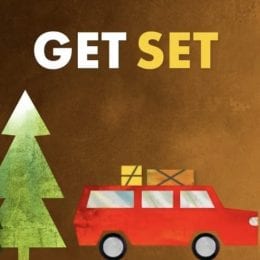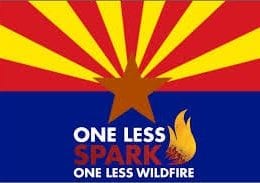To ensure your safety while visiting North Lake Tahoe communities, listed below are a number of resources and protocols to reference during your stay. Be prepared and have a plan with all in your party. Should North Lake Tahoe be directly impacted by a wildfire incident, our goal is to provide you with the information needed to remain safe. Upon arriving at your lodging unit, take the time to review the property’s escape plan by locating all exits. If an evacuation is necessary, take your room key with you, leave right away if you hear an alarm, use the stairs if you’re on an upper level versus an elevator, and if you have to evacuate through smoke, get low and go under the smoke.
LEARN MORE: WWW.READYFORWILDFIRE.ORG
FIRE SAFETY AND HEALTH TIPS DURING YOUR VISIT:
Stay informed on regional fire season restrictions during the summer and fall months. These restrictions set guidelines on permissible and restricted fire generating pieces of equipment in regards to open flames.
SIGN UP FOR EMERGENCY ALERTS:
Sign up for local emergency alerts on your cell phone and devices once you arrive so you can stay on top of any wildfire issues and recommendations if they arise.
Placer County Notifications via Placer Alert
Washoe County Notifications via CodeRED
Nevada County Notifications via CodeRED
El Dorado County Notifications via CodeRED
INFORMATION & RESOURCES:
First and foremost, no possession is worth your life so evacuate as soon as possible!
The Tahoe Fire & Fuels Team, a basin wide collaboration, have created the website www.TahoeLivingWithFire.com, which is a site dedicated to helping Lake Tahoe residents and visitors prepare for wildfire. It includes information on Getting Prepared, Getting Informed and Getting Involved.
Here are some additional resources on evacuation guides specific to the Lake Tahoe region:
- Ready for Wildfire Evacuation Guide
- North Tahoe Emergency Preparedness Guide (California)
- North Lake Tahoe Emergency Preparedness Guide (Nevada)
- North Lake Tahoe Guia Para Emergencias (Nevada)
- South Lake Tahoe Emergency Preparedness Guide
PROTECT YOUR HEALTH:
Smoke from wildfires across California and Nevada carry tiny particles that can damage the lungs, especially for those with existing respiratory conditions. If there is smoke in the North Tahoe region during your visit, consider the Air Quality Index (AQI) before heading outside. When conditions are above 100, public health officials and air quality experts begin to recommend staying indoors and limiting outdoor exertion.
For people who want to visit North Lake Tahoe and recreate outside, the current virus situation and the sometimes hazardous air from wildfires raise questions about what protection to use, and when. Here’s what the California Department of Public Health advises:
- Wear a cloth face covering if you’re going to be within six feet of others to limit the spread of COVID-19. Cloth masks and surgical masks do not protect the wearer from fine particulate matter in wildfire smoke.
- Wear an N95 respirator if you need to be outdoors in smoky air for an extended period of time.
Other considerations:
- N95 respirators provide protection from both wildfire smoke and viral particles but should currently be reserved for health care workers treating COVID-19 patients.
- N95 respirator masks must be properly fitted to be effective, and don’t usually work on people with facial hair.
- People with lung or heart conditions should consult their doctor before using an N95 mask, which can make breathing more difficult.
- Masks with one-way vents can reduce inhalation of smoke particles and viral particles for the wearer but do little to protect others from COVID-19. Cloth coverings are recommended for preventing COVID-19 spread.
- Children, pregnant women, older adults and people with heart and lung problems are especially susceptible to smokey air.
The best way to protect yourself from both wildfire smoke and COVID-19 is to stay indoors.
HERE ARE WAYS YOU CAN HELP:
- Donate to the Red Cross Disaster Relief Fund: Due to COVID, fire evacuees are going into hotels rather than shelters, but they are running out of rooms. You can also donate rewards points to the Red Cross to help.
- Donate to a Community Foundation: Community foundations get resources to local NGOs that support both the immediate relief work and the longer term recovery for families that have lost homes and businesses. Under the “relief fund” tab in the above link is a list of vetted community foundations and organizations that are supporting local recovery efforts.
- Check Fire Evacuee for the free Open Homes service provided by AirBNB for those in the region.



